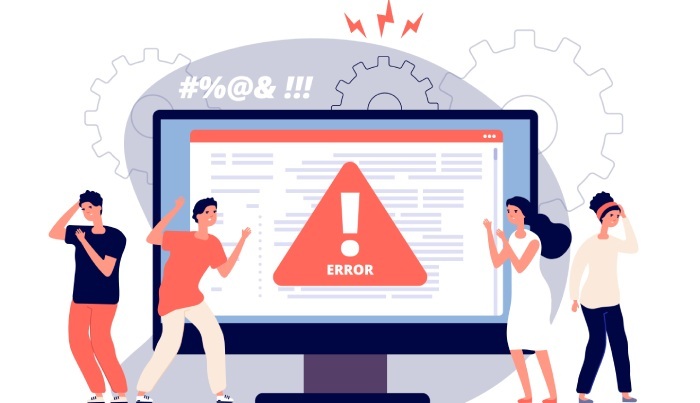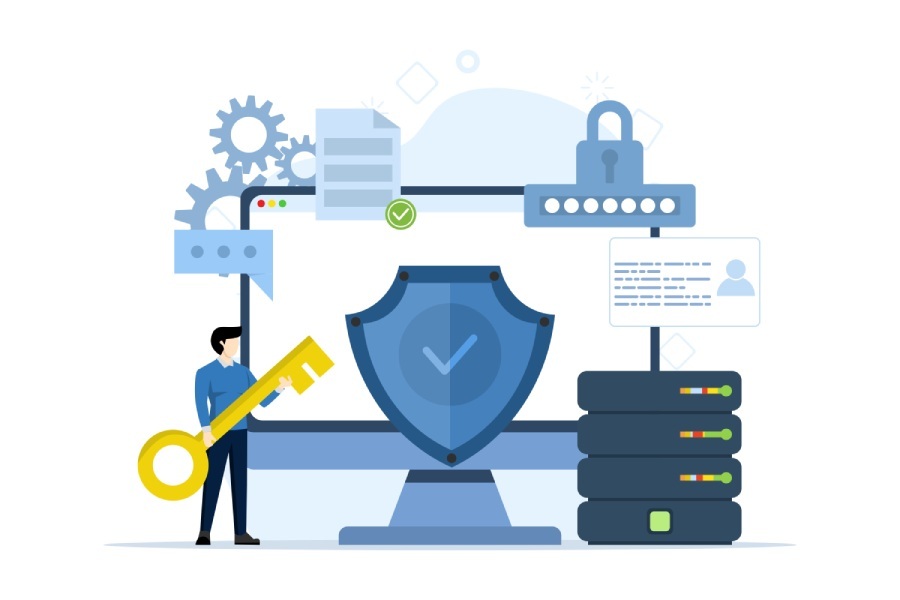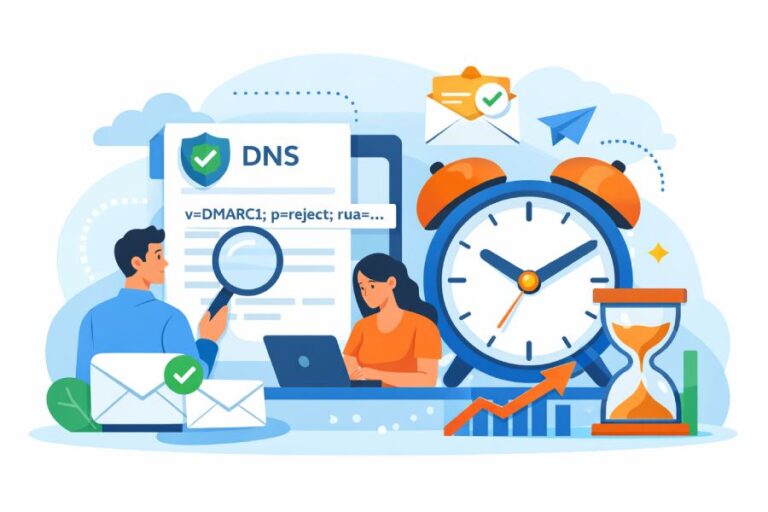How to Prevent SQL Injection Attacks: Best Practices for Secure Applications
What is SQL Injection?
SQL Injection (SQLi) is a cyber vulnerability that arises when attackers manipulate SQL queries by injecting malicious code into input fields intended for user data. This type of attack exploits the way applications communicate with their databases, particularly when these interactions aren’t properly secured. At its core, SQLi leverages poorly constructed queries—when applications don’t differentiate between user input and SQL commands, they open the door for attackers to execute unauthorized commands on the database.
To illustrate, imagine entering your username and password into a login form. An application retrieves your account via a query like SELECT * FROM users WHERE username = ‘input_username’ AND password = ‘input_password’. If an attacker inputs something like ‘ OR ‘1’=’1′; — instead of a valid username or password, this could trick the system into granting access without proper authentication, allowing the invader to bypass security measures.
“SQL injection is like sneakily inserting a false key to unlock private database vaults.”
The consequences of such vulnerabilities can be severe and far-reaching. When a database is compromised due to SQLI, attackers may gain unauthorized access to sensitive information, including personal identification details and financial records. According to the 2023 Verizon Data Breach Investigations Report, SQL injection attacks accounted for 8% of all data breaches—a reminder that this threat remains prevalent. Furthermore, IBM estimates the average cost of a data breach involving SQL injection at around $4.24 million.
Potential Impacts
- Unauthorized data access: Attackers can view sensitive information that should remain confidential.
- Data corruption: Malicious queries might modify existing data, leading to inaccuracies.
- Complete data loss: A determined attacker could delete entire sets of valuable data.
- Escalation of user privileges: SQLi can grant unauthorized permissions to users, giving them control over critical resources.
Recognizing how this vulnerability manifests is key in implementing robust security controls within web applications. Gaining insights into these threats enables developers and organizations to bolster their defenses effectively as we shift focus to explore additional concerns that may exist within online platforms.
Common Vulnerabilities in Web Applications
At the heart of many SQL injection vulnerabilities lies the way applications handle user inputs. When input is taken directly from users without being examined or cleaned, it opens the door for attackers to inject harmful SQL code. This is particularly evident in cases where applications hastily incorporate unsanitized input directly into SQL queries, making them prime targets for exploitation.

Unsorted User Inputs
Nobody likes being caught off-guard—especially not your database.
Applications that accept input without sanitization often face significant dangers. Imagine a simple login form where a user inputs their credentials. If the application naively inserts this input directly into an SQL query without any validation, it could easily be manipulated. A malicious actor might input something as deceptively simple as ‘ OR ‘1’=’1′–, which tricks the database into granting access irrespective of valid credentials.
Rather than confirming the username and password, the query now checks if ‘1’ equals ‘1’, which is true for every single record, thus bypassing authentication altogether. This vulnerability is a classic illustration of how neglecting to sanitize inputs can have dire consequences.
Moving beyond simply failing to sanitize inputs, we must also consider how dynamic SQL queries can play a role in creating vulnerabilities.
Dynamic SQL Queries
Dynamic SQL queries are constructed at runtime, often using string concatenation with user inputs. While this method may seem flexible and convenient, it can become a fatal flaw without proper safeguards. When developers opt for string concatenation to create queries on-the-fly, they inadvertently make it easier for attackers to craft malicious payloads that change the entire intent of the query.
Think of constructing a sentence by winging it without proofreading; one small error or misleading phrase can significantly alter its meaning—and so it goes with dynamic SQL.
For example, if you have an SQL command like SELECT * FROM users WHERE username = ‘ + inputUser + ‘ AND password = ‘ + inputPass + ‘, that allows someone to inject their own commands through the inputUser or inputPass fields. By failing to separate data from code cleanly, developers lay down breadcrumbs leading straight into their databases for would-be attackers.
Recognizing these vulnerabilities underscores the imperative for rigorous input validation and sanitization practices within any application development strategy, seamlessly paving the way toward more secure coding methodologies.
Effective Input Validation and Sanitization
The cornerstone of preventing SQL injection attacks lies in robust input validation and sanitization techniques. By thoughtfully controlling what data enters your application, you can dramatically reduce the risk of exploitation. This process is not about just blocking undesirable inputs but about ensuring only safe and necessary data makes its way into your systems. It’s a proactive approach to security, where you take charge of the criteria for acceptable data.

Allow-list Input Validation
One of the strongest methods to achieve this is through allow-list input validation. Think of it as a VIP list for data entries. This technique permits only those inputs that have been expressly defined beforehand. For example, if you’re creating a dropdown menu for selecting user roles, enforce values like ‘admin,’ ‘user,’ or ‘guest.’ By doing so, you effectively eliminate the risk posed by arbitrary entries or malicious commands sneaking their way into the system.
A well-implemented allow-list not only bolsters security but also enhances user experience by guiding users through predefined options, minimizing input errors in the process.
Regular Expressions
Moving beyond allow-lists, regular expressions serve as a powerful tool for enforcing strict patterns on various types of user input. This tactic shines particularly in fields where format matters immensely, such as email addresses or phone numbers. Utilizing regex helps ensure that any data provided conforms to expected formats before it even reaches your database.
For instance, validating an email address might look something like this: ^[a-zA-Z0-9+_.-]+@[a-zA-Z0-9.-]+$. This regex checks for all valid characters in an email format — letters, numbers, and certain symbols — while ensuring there’s a proper structure to the input. By employing these patterns consistently across your application forms, you build another layer of immunity against unwanted data submissions.
However, validation alone isn’t foolproof, which leads us to underscore the importance of certain protective coding practices. These additional measures reinforce your defenses against SQL injection risks while enhancing overall application security.
Using Prepared Statements and Parameterized Queries
Prepared statements and parameterized queries represent a robust defense against SQL injection attacks, effectively keeping your database safe by creating a clear boundary between SQL commands and user inputs. When you use prepared statements, the structure of your SQL query is defined ahead of time. This ensures that any values supplied later—such as those from user input—are treated strictly as data rather than executable code. This crucial separation makes it virtually impossible for an attacker to manipulate the command in harmful ways.

Prepared Statements
Executing a prepared statement involves setting up your SQL command with placeholders. For a clearer picture, let’s consider how this process unfolds in programming languages like Java. You might write something like the following:
PreparedStatement pstmt = connection.prepareStatement(“SELECT * FROM users WHERE username = ?”);
pstmt.setString(1, “admin”);
In this example, the ? symbol acts as a placeholder. The setString method binds the actual value after the command structure has already been defined. No matter what “admin” might contain (even if someone attempted to inject malicious SQL), it will never change the original intent of the query. Thus, you’re guarding your application from unwanted intrusion through careful coding practices.
Continuing with this theme of preparation, let’s explore how similar concepts apply within other programming environments.
Parameterized Queries in .NET
In a similar vein but within a .NET framework context, parameterized queries operate with the same underlying principles. Here’s how you might implement it:
OleDbCommand command = new OleDbCommand("SELECT * FROM users WHERE username = @username", connection);
command.Parameters.AddWithValue("@username", "admin");Specifying @username as a parameter allows you to input values separately. Consequently, if someone tries to insert harmful SQL codes as part of their input, the system ignores that potential mischief since it does not alter the way the SQL command was initially set up.
This dual approach across programming languages highlights an important point: using prepared statements or parameterized queries is not just about securing individual applications; it’s about adopting a mindset geared toward proactive security. Incorporating these methodologies into all aspects of your coding practices transforms them from simple preventive measures into essential building blocks for robust application security.
By understanding these fundamental tactics—both in syntax and intention—developers can improve overall application safety. As we move forward in examining additional strategies for reinforcing security measures, each layer added enhances the defense against potential adversaries lurking around cyberspace.

Implementing Secure Coding Practices
Developing secure coding habits goes well beyond just protecting against SQL injection attacks. Just as a skilled artisan takes pride in the quality of their work, developers must approach coding with an eye for security. By adopting robust practices from the outset, we’re not merely reacting to threats; we’re taking proactive steps to create a safer digital landscape where applications can thrive securely.
Code Reviews and Audits
One of the most effective methods to ensure code integrity is through regular code reviews and security audits. These processes act like a safety net, capturing potential flaws early in the development cycle. Imagine this: a team diligently writing their code only to have another experienced pair of eyes scrutinize it for mistakes or vulnerabilities before deploying it. This practice can catch issues that the original author might overlook simply due to familiarity and blind spots.
Many organizations, including tech giants like Google, have adopted peer code reviews as a standard practice. This not only helps maintain high security standards but also fosters a culture of collaboration and learning among developers. As teams share their knowledge during these reviews, they build stronger, more resilient codebases together—one line at a time.
Least Privilege Principle
Another crucial aspect of secure coding is applying the principle of least privilege when granting database access. This means providing users and application components only with the permissions they need to perform their tasks. Picture a locked treasure chest—why would you give anyone a key if they only need to take out one item? Similarly, limiting access helps minimize risk, as each additional permission increases the attack surface level for potential exploitation.
In practice, implementing this principle involves reviewing user roles within your applications continuously. Analyze who needs access to what data and adjust permissions accordingly. It can be tedious, but think of it as regularly pruning a garden to allow healthier growth.

Nevertheless, even robust coding practices can benefit from additional security layers provided by specialized tools. Understanding how these tools complement secure coding will strengthen defenses further against enablers of potential vulnerabilities.
Additional Security Tools and Measures
When it comes to securing your applications, a layered security approach is essential. This strategy not only includes best coding practices but augments those with specialized tools designed to detect, prevent, and mitigate vulnerabilities. Among these tools are Web Application Firewalls (WAFs) and automated vulnerability scanners, which can act as your first line of defense in a digital landscape increasingly teeming with threats.
Web Application Firewalls (WAFs)
WAFs serve as gatekeepers for your web applications. They monitor and filter incoming traffic to identify and block potentially harmful requests before they can exploit vulnerabilities in your SQL queries. Think of a WAF as a sentry standing guard at the door of your web application, stopping malicious traffic from entering. For instance, ModSecurity, an open-source WAF, integrates seamlessly with various web servers like Apache and Nginx, constantly updating threat signatures and rules that adapt based on reported vulnerabilities globally.
The beauty of using WAFs lies in their ability to offer real-time protection without modifying your existing application codebase—a great relief for developers focused on feature enhancement rather than constant security patching.

Automated Vulnerability Scanners
Automated vulnerability scanners are indispensable assets for enhancing application security. Tools such as OWASP ZAP or Burp Suite automate the tedious process of scanning your applications for vulnerabilities that might leave you open to SQL injection attacks. They systematically crawl through all parts of your application, checking for these vulnerabilities while providing actionable reports.
A report by Positive Technologies reveals that when employed as part of a comprehensive security strategy, automated tools can identify up to 97% of vulnerabilities. This statistic underscores the importance of regularly integrating these scanners into your development lifecycle—beyond mere compliance purposes.
However, it is crucial to understand that while these scanners can catch numerous issues, they are not foolproof solutions. Pairing them with manual reviews can yield better insights into areas that often elude automated detection. Engaging knowledgeable security experts who can interpret scanner results will enhance the overall security posture as well.
Complementing your web security efforts, implementing SPF, DKIM, and DMARC adds essential protection against email spoofing and phishing threats.
Lastly, adopting these measures ensures a reduced attack surface for your applications, fortifying databases against malicious attempts while empowering developers to focus on creating without compromising security. With every layer added, you incrementally increase resistance against SQL injection and similar threats lurking in the digital shadows.
Incorporating these tools and measures into your security protocol may not only protect sensitive data but also foster trust among users and stakeholders.







